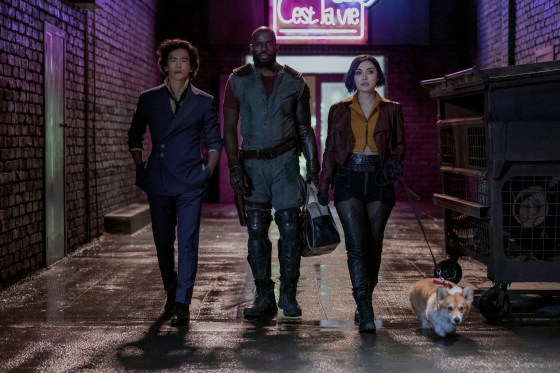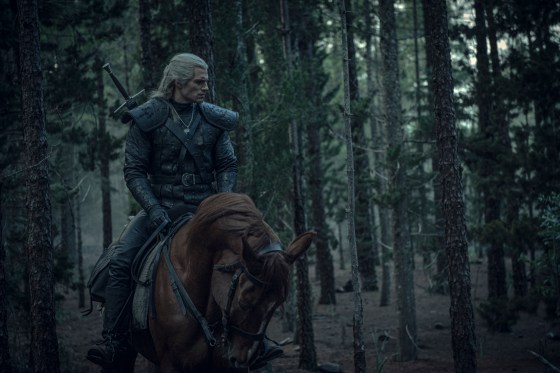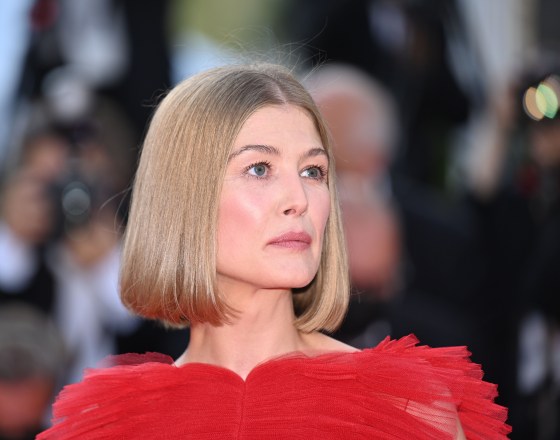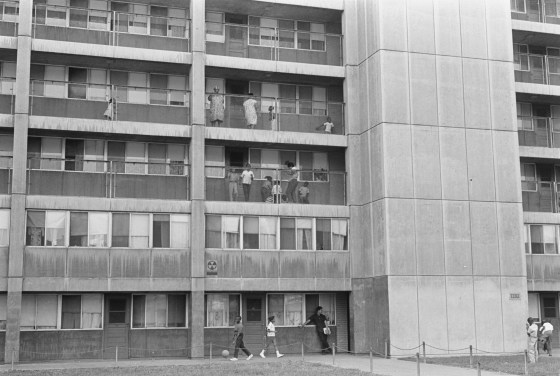With the rise of the Delta variant of COVID-19, the fate of movies remains uncertain—will studios continue to release new films in theaters? On streaming services? Both? But while you may not have immediate access to some of the most talked-about superhero films and Oscar hopefuls this year, there’s plenty of TV to keep you busy this fall.
Fan-favorite shows like Succession, The Morning Show and Dear White People are set to return after long, pandemic-induced breaks. Meanwhile, this autumn’s TV lineup of new series is particularly star-studded: Clive Owen is taking a turn as Bill Clinton in Impeachment: American Crime Story, Oscar Isaac and Jessica Chastain are duking it out as an unhappily married couple in Scenes From a Marriage and Michael Keaton and Rosario Dawson are leading an A-list adaptation of Dopesick, the story of how one pharma company jumpstarted the opioid crisis in America.
[time-brightcove not-tgx=”true”]
And while neither the long-planned Game of Thrones spinoffs nor the much-anticipated Lord of the Rings TV show will debut on the small screen this year, the race for the next hit sci-fi or fantasy series has begun with adaptations of Foundation and The Wheel of Time set to premiere in the next few months, along with a live-action version of the anime series Cowboy Bebop and a reinterpretation of War of the Worlds called Invasion. Those new series will compete with the next two Marvel shows, Hawkeye and Ms. Marvel, the Mandalorian spinoff, The Book of Boba Fett and the second season of the Witcher for genre television supremacy as the holidays approach.
Here are the biggest series you can look forward to for the rest of the year.
What We Do in the Shadows
Sept. 2 on FX
The critically beloved vampire comedy based on Taika Waititi and Jemaine Clement’s film of the same name returns for a third season of bloody fun.
Money Heist
Sept. 3 on Netflix
One of Netflix’s biggest international hits, Spain’s Money Heist promises plenty more twists and turns as the drama about a group of robbers comes to a close in its fifth and final season.
Impeachment: American Crime Story
Sept. 7 on FX
Ryan Murphy’s Emmy-winning anthology will tackle Bill Clinton’s impeachment. The story, produced by Monica Lewinsky, centers largely on her experience. Beanie Feldestein plays Lewinsky alongside an all-star cast that includes Murphy regular Sarah Paulson as Linda Tripp, Edie Falco as Hillary Clinton and Clive Owen as the former president.
Scenes From a Marriage
Sept. 12 on HBO
Oscar Isaac and Jessica Chastain star as a couple struggling to keep their marriage afloat over the course of a decade in a remake of the 1973 miniseries from legendary filmmaker Ingmar Bergman.
American Rust
Sept. 12 on Showtime
The drama starring Jeff Daniels as a surly Pennsylvania police chief whose infidelity interferes with a murder investigation exudes Mare of Easttown vibes.
Y: The Last Man
Sept. 13 on FX on Hulu
This graphic novel adaptation asks what would happen if all but one man on earth died: Would we live in a dystopia or utopia?
The Lost Symbol
Sept. 16 on Peacock
Robert Langdon, the symbologist hero of Dan Brown’s novels, gets his own origin story. In it, the young academic must solve a series of puzzles to save his mentor.
The Premise
Sept. 16 on FX on Hulu
The Office writer and star B.J. Novak’s anthology series of modern morality tales will explore thorny premises like what one man does when he discovers that the blurry background in his sex tape might provide evidence in a police abuse case. The cast includes Tracee Ellis Ross, Daniel Dae Kim and Jon Bernthal.
The Morning Show
Sept. 17 on Apple TV+
Julianna Margulies and Hasan Minhaj join Jennifer Aniston, Reese Witherspoon and Billy Crudrup for a second season of the series about a morning show reckoning with a #MeToo scandal.
Read More: How Bombshell and The Morning Show Reckon With #MeToo
Sex Education
Sept. 17 on Netflix
In Sex Education’s third season, Girls star Jemima Kirke joins the cast as the high school’s new headmistress trying to rein in rebellious students.
Muhammad Ali
Sept. 19 on PBS
Famed documentarian Ken Burns endeavors to capture the complex life of the iconic boxer and inspirational activist.
Our Kind of People
Sept. 21 on Fox
Lee Daniels’ new drama centers on a rich enclave of Black families in Martha’s Vineyard and recalls the soapy pleasures of Empire.
Dear White People
Sept. 22 on Netflix
In its fourth and final season, Justin Simien’s campus dramedy will still tackle questions of race relations on campus—especially in a moment of continued upheaval. But it will also take the form of a ’90s-inspired musical.
The Wonder Years
Sept. 22 on ABC
Daniels is also producing a reboot of the classic coming-of-age story, this time centered on a Black 12-year-old growing up in 1960s Alabama. Dulé Hill plays the dad, and Don Cheadle narrates.
Foundation
Sept. 24 on Apple TV+
Isaac Asimov’s epic sci-fi trilogy has inspired space stories ranging from Star Trek to Dune. Now it’s finally getting its own adaptation. Lee Pace and Jared Harris star in the show, which centers on a rebellion within the ranks of a galactic empire.
Midnight Mass
Sept. 24 on Netflix
Haunting of Hill House creator Mike Flanagan conjures up another creepy tale, this time about an isolated island beset by supernatural events. Friday Night Lights’ Zach Gilford stars in the series.
BMF
Sept. 26 on Starz
The 50 Cent-produced drama chronicles a tale inspired by the true story of the rise of a criminal empire in Detroit dubbed the Black Mafia Family.
Succession
October TBA on HBO
The beloved HBO dramedy about a Murdoch-esque family and their squabbles over who will rule their media empire finally returns for a third season.
Maid
Oct. 1 on Netflix
Based on Stephanie Land’s popular memoir about poverty in America, Maid stars mother and
daughter Andie McDowell and Margaret Qualley.
Dopesick
Oct. 3 on Hulu
Michael Keaton and Rosario Dawson star in the familiar tale of a pharma company starting a drug epidemic by misrepresenting how addictive OxyContin is.
Queens
Oct. 19 on ABC
The nostalgia for ’90s girls groups that inspired Girls5Eva still has a hold over Hollywood. Queens centers on a girls group that reunites in their 40s to make music again. Real-life ’90s icons Eve and Brandy star.
The Next Thing You Eat

Oct. 21 on Hulu
Ugly Delicious star and chef David Chang explores the next wave of the food world, from lab-grown fish to insect farms.
Invasion
Oct. 22 on Apple TV+
Inspired by H.G. Wells’ seminal story War of the Worlds, Invasion follows an alien attack on earth, as told from the viewpoints of many characters across several continents.
Taste the Nation: Holiday Edition

Nov. 4 on Hulu
Padma Lakshmi’s wonderful food series, Taste the Nation, which spotlights how various immigrant communities shape American food culture, is getting a holiday-centric season this fall. Each episode in the four-part series will highlight a different holiday celebration and all the traditional sustenance that accompanies it, from a Korean New Year’s celebration to a Cuban Christmas party in Miami.
Read More: Cooking in Quarantine With Top Chef Host Padma Lakshmi Means Tasting Many Nations
Dexter: New Blood
Nov. 7 on Showtime
Michael C. Hall returns as the incongruously virtuous serial killer in a 10-episode arc set a decade after the events of the original show. The creators have promised a satisfying coda to the much-maligned series finale.
The Shrink Next Door
Nov. 12 on Apple TV+
Based on a true story and hit podcast, Paul Rudd plays a doctor who takes over all decision-making powers for his meek patient (Will Ferrell).
Cowboy Bebop

Nov. 19 on Netflix
John Cho stars in the live-action adaptation of the celebrated Japanese anime series about a ragtag group of bounty hunters chasing criminals across space.
Hawkeye

Nov. 24 on Disney+
The next Marvel Studios show gives center stage to Jeremy Renner’s arrow-slinging superhero and his new protege, played by Hailee Steinfeld.
Read More: How the Black Widow End Credits Scene Sets Up Hawkeye
The Beatles: Get Back
Nov. 25 on Disney+
Peter Jackson is no stranger to spending countless hours in the editing room: his 2018 WW1 documentary They Shall Not Grow Old restored dozens of hours of century-old footage. Now, he helms a three-part documentary culled from 60 hours of never-before-seen footage and 150 hours of unheard audio from the Beatles’ 1969 recording sessions for the album Let It Be.
The Witcher

Dec. 17 on Netflix
The hit fantasy series starring Henry Cavill as monster hunter Geralt returns for the holidays.
The Book of Boba Fett

December on Disney+
The first of several planned Mandalorian spinoffs centers on the fan-favorite Star Wars antihero and bounty hunter, Boba Fett.
Read More: The Book of Boba Fett Is The Mandalorian’s First Spinoff Show
Ms. Marvel

TBA on Disney+
Marvel’s first Muslim superhero, Kamala Khan, gets her own TV show about surviving high school before she goes on to star in the next Captain Marvel movie, The Marvels.
The Wheel of Time

TBA on Amazon
In an adaptation of Robert Jordan’s popular fantasy series, Rosamund Pike plays a magician in search of a prophesied chosen one.









